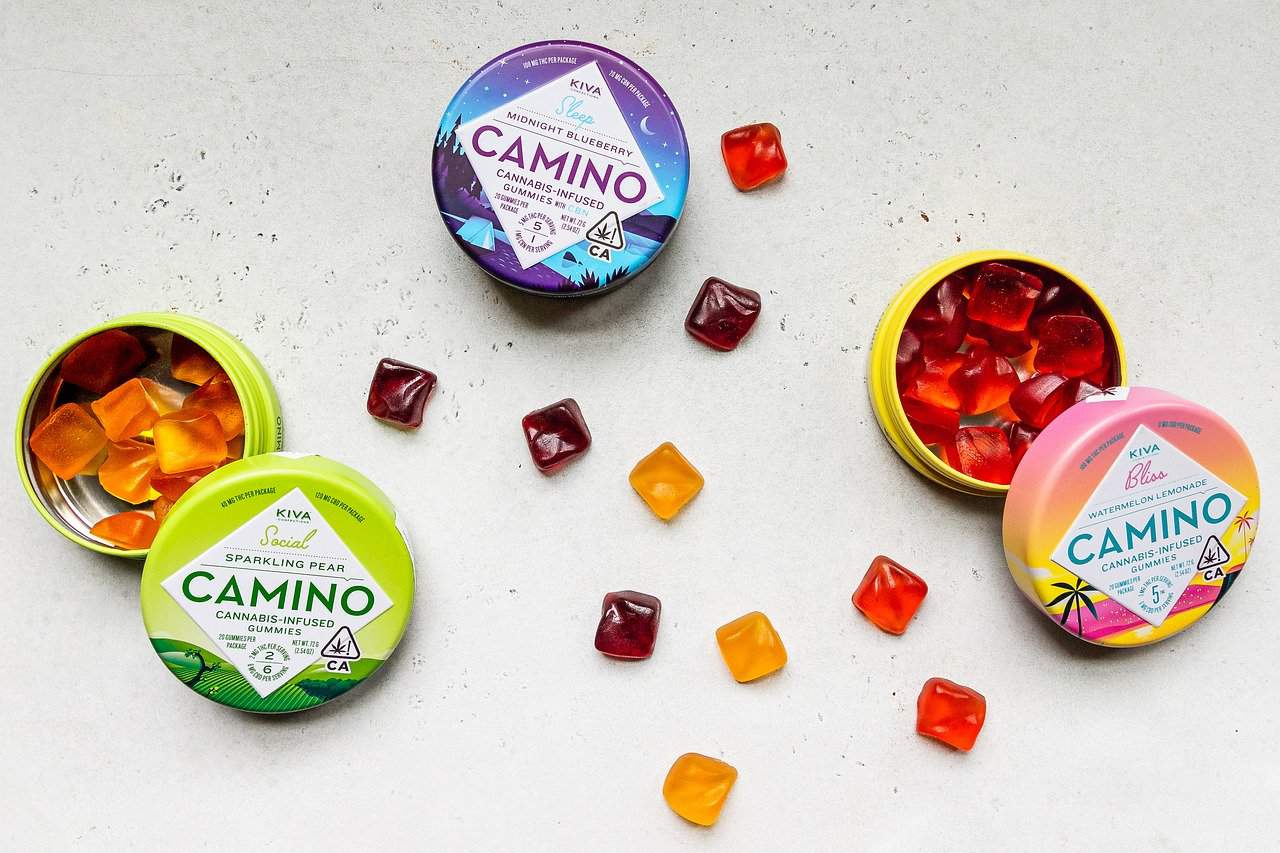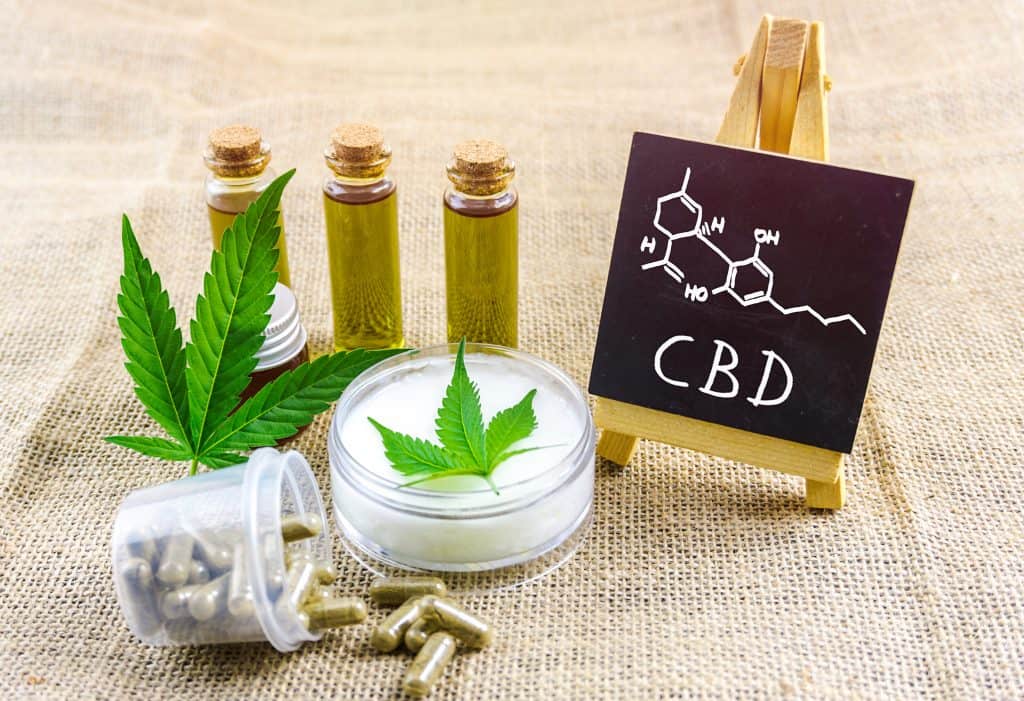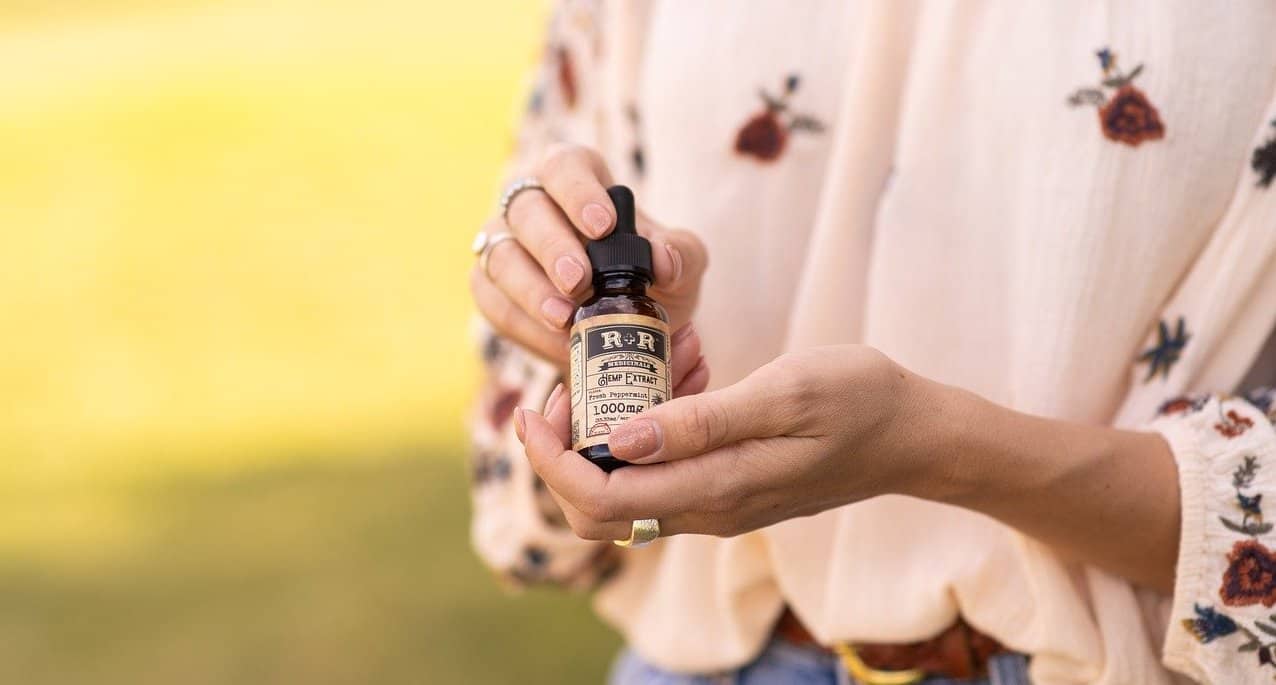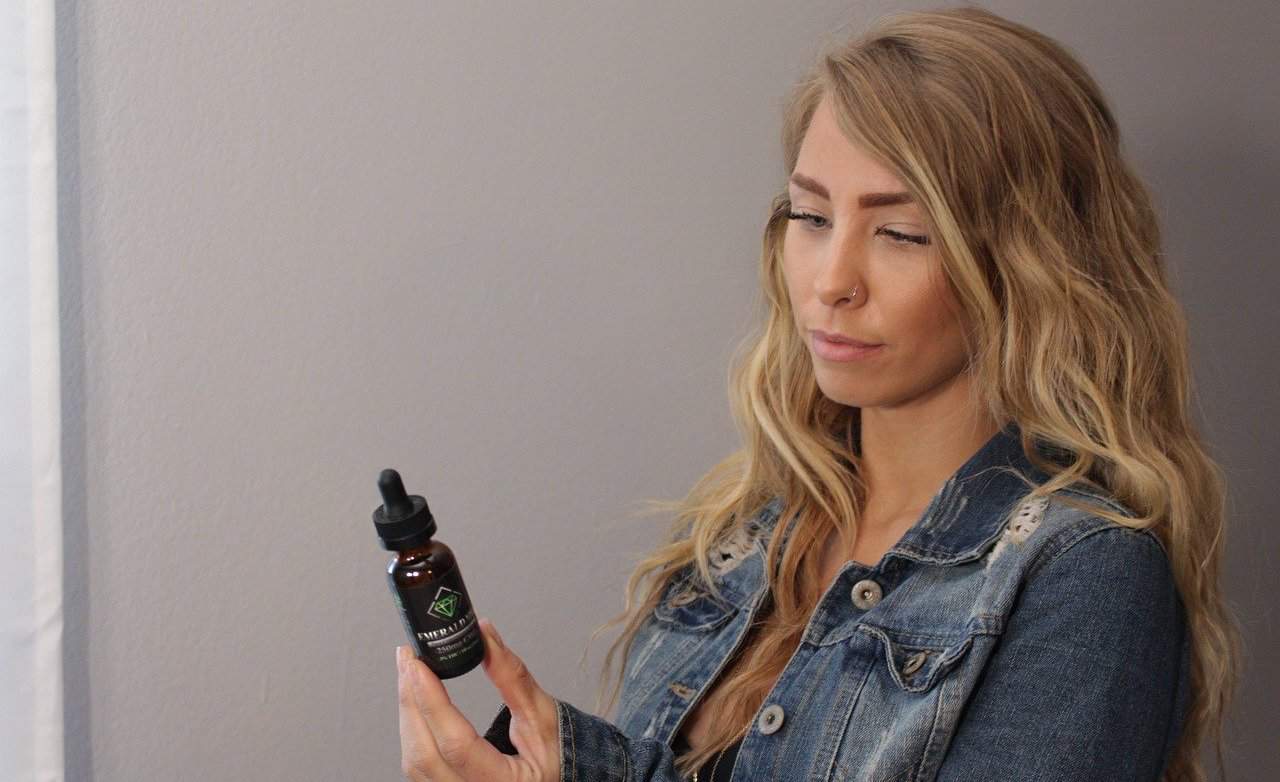CBD is extremely popular and versatile as a wellness product, but to achieve the best results you need to take right dose. In this article, we break down the science behind CBD and how its processed in the human body.
Cannabidiol, commonly known as CBD, is one of the many non-psychoactive cannabinoids found in the cannabis plant. It is completely legal and has minimal side effects. However, some people do report that CBD can make them feel drowsy. One of the ways to make sure you don’t experience side effects is to make sure you’re not taking more than you need.
Figuring out how to dose your CBD every day isn’t complicated, but it still remains one of the most commonly asked questions about CBD products. When it comes to taking CBD in capsule form or eating CBD gummies, your dose is already measured out for you. However, with CBD oils, sometimes referred to as tinctures or drops, you have to measure it yourself.
We’ve already covered CBD doses for dogs, and now we’re going to explain how you can find out how much CBD you should take to get the best results. Everyone’s body is different, and different bodies come with different expectations and needs.
This presents an interesting puzzle–because there’s not always a simple answer. But worry not! We will break down the pieces to the puzzle and put them together for you in a clear picture, so that you can get the most out of your CBD.
Why Do People Need Different Doses of CBD?

CBD isn’t one-size-fits-all, and that can be a little bit confusing when you’re not experienced with it. There are several factors that play a role in the amount of CBD you should be taking. Some of these factors include your age, weight, gender, and symptoms. Some people are also more sensitive to cannabinoids than others.
Younger users may find that they need less CBD than older users. Also, one’s weight plays a significant role because the endocannabinoid system, our bodies’ system for interacting with cannabinoids, is made up of a network of cannabinoid receptors; research suggests that these receptors are more present in the body’s fat cells than in other cells.
So what does this mean? In essence, it simply means that we are built differently and because of this we shouldn’t expect the same results from standardized dosing. And it means that each individual should use an understanding of their bodies to inform dosing schedules for CBD.
Because the dose of CBD that you need will depend on your general health needs and expectations. Not everyone seeks the same effects when taking CBD or cares about the same health benefits. So the exact CBD dose that’s best for you will depend on what you want to gain from it.
The Health Benefits of CBD
CBD has many uses and health benefits, as you probably already know. And depending on which benefit you’re after, you’ll find suggestions for different doses. For instance, someone who is using CBD to deal with chronic pain or to help them with a serious medical problem (such as cancer) may need a significantly higher dose than someone who is using CBD to help them sleep at night.
The general rule here is that the more serious the symptoms are, the higher the necessary dose is going to be.
The type of CBD you choose is also something that is going to make a difference in the dose you need. A full-spectrum CBD is packed with other cannabinoids and may provide you better results with less product when compared to a CBD isolate due to what’s known as the Entourage Effect.
The Entourage Effect dictates that cannabinoids improve the effects of one another when digested together. This makes a strong argument for using full-spectrum CBD when looking to achieve the most potent effects.
The Benefits of CBD Isolate
CBD isolate on the other hand contains just the one cannabinoid, and thus will not provide the entourage effect.
Because of this, you may find that you need more to achieve the best results. However, taking CBD isolate does make it easier to track results and your body’s response to dosing. Because there are so many cannabinoids in full-spectrum CBD, it will be harder to know what cannabinoid is creating which effect.
There’s tons of different CBD products of both varieties. Edibles, beverages, topical creams, patches, tea, cigarettes, vape products, and plenty of other options give you multiple ways to take CBD every day. But these different products operate by different methods of absorption, which in-turn creates a range of variability in perceived effects–even when products deliver equivalent doses of CBD.
Each delivery method is going to be absorbed into the bloodstream at a different rate, which means you may need different doses based on the method you choose. The science behind this point is interesting and might help you to better evaluate CBD products and their doses!
The Science of CBD Absorption

In order to understand what dose of CBD will be best for you, we need to first establish how the body absorbs and processes CBD. Because some forms of absorptions simply won’t work as well as others, and in some cases will deliver entirely different effects.
A great example of this is the difference between topical CBD products and sublingual CBD products. Topical CBD products deliver CBD directly to the skin, but the problem here is that the CBD typically gets trapped in the first layer of the skin (epidermis) and won’t properly absorb into the dermis, where blood capillaries, nerve endings, and sweat glands are located.
Because of this, topical CBD products will typically only deliver localized effects to the body, which is why they are marketed for things like joint pain and muscle soreness. Topical CBD products are best used to treat issues in a specific part of the body, since the CBD will not effectively reach the bloodstream.
CBD gummies, herb, and oils on the other hand, rely on entering the bloodstream to deliver full-body effects. By entering the bloodstream the CBD will cross the blood-brain-barrier which allows for psychophysiological effects to set in. In fact, the effective rate at which a CBD dose enters the bloodstream is much more important than the dose amount itself.
CBD, The First Pass Effect, and Why Sublingual CBD Oil Might be Best for You
When you ingest CBD by eating it, the CBD is absorbed through the stomach which then sends it to be processed in the liver before sending it to the bloodstream. This is what’s known as the First Pass Effect. And anywhere from 20-60% of a substance is lost during this process.
In other words, when you digest an edible dose of CBD you should expect to lose roughly half of the dose, as your liver and gut wall will filter it out before it enters systemic circulation. So with this in mind, if you’re looking for the most potent and efficient dose of CBD, you will want to consider smoking it or using an oil.
Due to the obvious health concerns surrounding smoke inhalation, we believe CBD oils provide the most effective dosing and here’s why. Sublingual CBD doses skip the first pass effect altogether by delivering the CBD directly to the bloodstream.
Sublingual CBD products advise delivering the dose under the tongue, where there’s a tremendous density of blood vessels near the surface of the skin. And because the mouth is designed to absorb nutrients as we eat and drink, the CBD is efficiently absorbed and sent directly to the bloodstream.
This means the sublingual CBD offer the most potent and fast-acting effects, making it the perfect option for those looking to achieve the highest doses of CBD without having to ingest too much of a product. For instance, to enjoy the same dose as five CBD gummies, you might only need a few drops of CBD oil.
Transdermal CBD
Smoke, oils, topicals, and edibles–if these don’t work for you then you still have one last option to try. Transdermal CBD works by the same function as sublingual CBD, however transdermal CBD products look to deliver their dose to the bloodstream by way of the skin.
Unlike topical CBD creams, transdermal CBD creams actually penetrate the skin matrix of the epidermis and reach the second layer of skin called the dermis. Here, the CBD is absorbed directly into the skin’s capillaries, blood vessels, and glands.
To accomplish this transdermal delivery, the CBD must be nano particulated–meaning that the CBD particles have been broken down to their smallest denominator and then formulated in a transdermal cream base that encourages absorption through the skin.
Transdermal CBD products will be an excellent choice for individuals with heath problems that would negatively impact sublingual, edible, or smokeable CBD doses. While this science is relatively new and underdeveloped, more and more CBD companies are jumping on the transdermal bandwagon–so keep your eyes open for new products entering the market!
Finding the Right Dose of CBD for You

So now that we’ve covered the various dose-delivery methods for different CBD product types, let’s talk about the actual numbers involved in dosing and what they mean.
Some products offer CBD doses that are less than 10 milligrams per serving, and some products go all the way up to 60 to 100 milligrams per serving, and in some cases even more. This huge range of available dose options encourages experimentation. So that you can find what provides you the best results.
If you’re using CBD for general wellness, chances are you’re not going to need a very large dose at all. Starting with something simple like 10 to 25 milligrams taken daily is going to provide you with the benefits of CBD but won’t make you sleepy. Think of these smaller doses as being similar to taking a daily dose of a vitamin. You might not notice the effects acutely, but when taken regularly you will start to notice the longterm effects.
The Varied Effects of Dosing High and Dosing Low
Taking lower doses of CBD has been reported to raise energy, similar to the boost experienced after a cup of coffee or dose of vitamin C. However, others report a low-energy result similar to being sleepy or taking a depressant. This is due to the anxiolytic effects of CBD, which are a highly desired result for many people. Whether you need a high dose to achieve the anxiolytic effects of CBD will depend on the type of product you’re using, when you use, and how your body reacts to the dose.
To treat symptoms of anxiety, depression, or other psychological tensions consider increasing your dose to 100mg or more per dose. The great thing about CBD is that there are no known cases of overdose, or health issues related to taking “too much.” Though you will want to strike a balance between the anxiolytic benefits of CBD and its depressive effects, which might cause you to get too sleepy during the day.
This makes CBD one of the safest things to take when looking to improve your wellness. Treating a physical ailments or more serious disorders with CBD is going to be a little bit different though.
If you have something like neuropathy or arthritis that causes you severe pain, or if you struggle heavily with anxiety, you may find that 50-100 milligrams a day or more is what provides you with the most relief. If you have something with acute symptoms like muscle soreness, joint pain when it rains, or if you get a little bit anxious throughout the day, you may need less.
How to Experiment with CBD Dosing
The process of finding the right dose for you is an experimental one.
You should always start low and go slow, just like with anything else you put into your body. If you have mild symptoms, we recommend starting with 10 milligrams, or even 5 milligrams, per day. If you have more severe symptoms, you can start a little bit higher (think in the 20- to 25-milligram range). You should take that amount for at least a week and see if you get results from it, then move up as needed, a little at a time.
We also recommend that if you’re not achieving the desired results from a CBD dose–even after increasing the dose amount–that you consider changing products. Prioritize CBD brands that employ third party lab-testing.
These companies demonstrate the quality and purity of their products by having their doses and potencies confirmed through official scrutinization in a laboratory environment.
Additionally, to increase the potency and effectiveness of your CBD doses, consider taking multiple CBD doses of different types to engage the entourage effect. For instance, you might want to consider taking a daily dose of sublingual CBD oil combined with occasional doses of a full-spectrum product.
This engages the entourage effect but insures that pure CBD will be ingested at the highest concentrations. And while edibles and topicals will not be as efficient at delivering CBD to the bloodstream, you might find that these work better for you.
So don’t be afraid to base your doses on what you feel works best!
Understanding CBD Labels

One thing that is a key part of learning how to dose CBD is understanding CBD labels. Most of them have an amount on the front of the bottle that can range from 300 to 3,000 milligrams. This amount is not going to be the amount per dose; instead, CBD manufacturers put this number on there to tell you exactly how much CBD is in the bottle.
In order to find out how much each dose is, you need to look a little bit further. Some of them will have this information printed beneath the amount on the front of the label. Others will have it in the nutrition information.
A 30-milliliter bottle that has 300 milligrams per bottle is going to be 10 milligrams per milliliter; so, one dropper of oil will be a 10-milligram dose of CBD. Each dropperful contains around 1 milliliter of fluid. A 30-milliliter bottle that has 1,000 milligrams per bottle is going to be about 33 milligrams per dose. Make sure you read the bottle and any information on the packaging to help you to understand exactly how much you’re getting. If measuring doses is difficult for you, consider getting a product that has a pre-measured dose in it like tablets, capsules, gummies, or edibles.
Just remember, start at a lower dose than you think you need, and don’t be discouraged if you don’t experience the results you’re seeking right away. Like any good experiment, finding the perfect dose of CBD requires time! But if you follow these methods, we’re confident you can figure out what works for you in just a few weeks.
